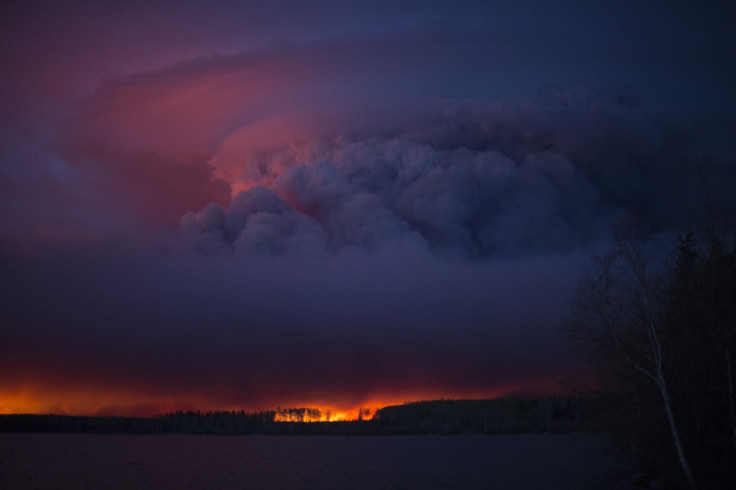Canada wildfire large enough to create own weather system

The raging wildfire in Alberta, Canada, is so massive such that it has begun to create its own weather conditions. The blaze has also sparked lightning bolts in the ash-blackened sky.
With no end in sight, the fire has seen an eight-fold increase in terms of area – covering up to 85,000 hectares in Fort McMurray. The city's entire population of 88,000 has been evacuated. As many as 8,000 people were airlifted.
While most of the evacuees fled to the south of Alberta, those airlifted arrived at Edmonton International Airport. It is not known where they would be sheltered. Most of the people who have fled to the north are housed in oil sands work camps, which are usually used by workers.
"Our focus right now is on getting those people south as quickly as possible. I must be very, very direct about this – it is apparent that the damage to the community of Fort McMurray is extensive and the city is not safe for residents," said Alberta Premier Rachel Notley. So far there have been no injuries or deaths due to the wildfire.
Subsequent to the declaration of a state of emergency in Alberta, more than 1,100 firefighters and 145 helicopters are battling the blaze. Twenty-two air tankers have also been deployed. The wildfires have also destroyed hundreds of homes in Fort McMurray and gutted dozens of other buildings. The fire is so large it is visible from space.
Extreme wildfire in Fort McMurray area that's burned ~19,000 acres is seen by our satellites https://t.co/cW5rWrBGzt pic.twitter.com/C4IZ0wUvBy
— NASA (@NASA) 5 May 2016
"The fire behaviour is so extreme and conditions are so volatile, we want to make sure we are bringing in resources when it's safe to do so. Firefighters being able to work safely is a challenge," Chad Morrison, a spokesperson for the Alberta Wildlife Prevention and Enforcement, told ABC News.
The oil sands region, which plays a vital role in the Canadian economy, is the third largest oil reserve in the world after Saudi Arabia and Venezuela.
© Copyright IBTimes 2025. All rights reserved.






















